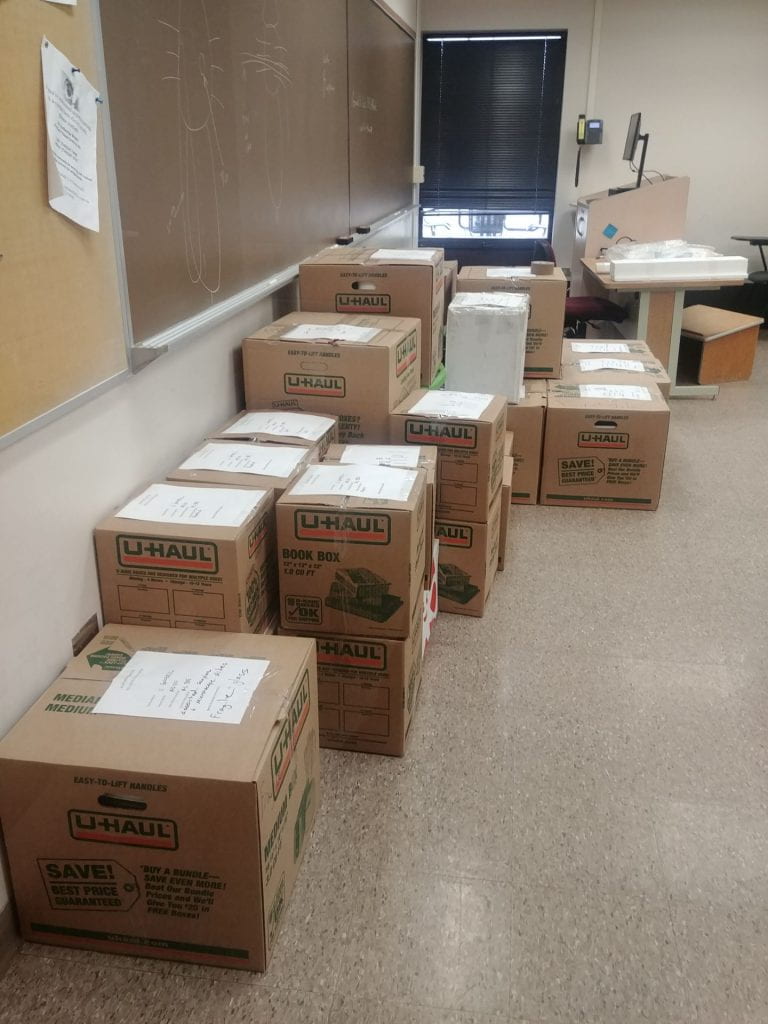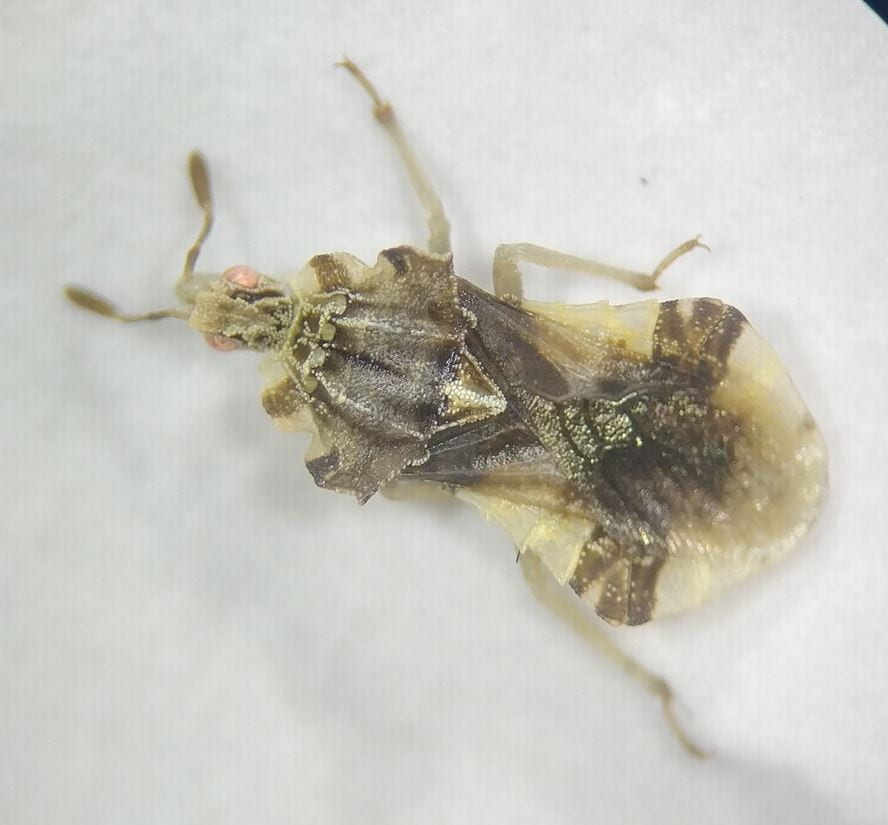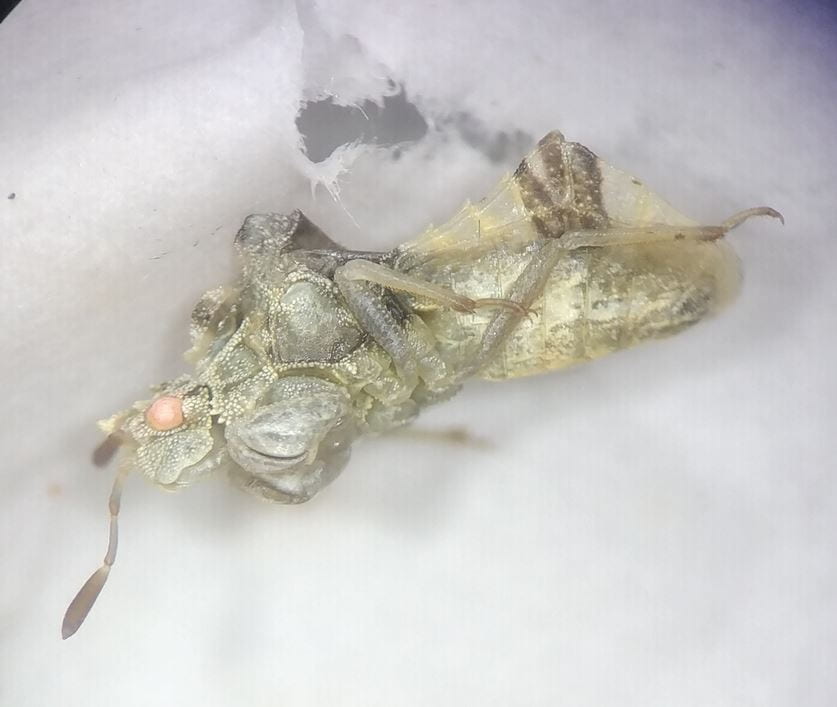Last week we finished sorting 7 kits: C. Corney (Crawford), K. Elliot (Monroe), R. Luff (Clinton), J. Nelson (Morrow), B. Klips and R. Bradley (Marion), C. Gottfried (Wyandot), and B Twaddle (Stark). We are over 32,851 bees pinned and databased!

Our progress of bees pinned per week was pretty good this week despite so much effort spent towards moving.

I dropped off more bycatch specimens to the Museum of Biological Diversity. There are lots of ants and tiny parasitic wasps that will go to good use.
We also spent a lot of time packing up the lab and moving specimens over to the new lab space. We should finish moving over to the new space this coming week!

We have half of the lab packed up and ready to go in the storage room, but still plenty to go. Thanks to our student workers for getting so many of these packed!
Bycatch updates:

One of the kits from this week had a very large grasshopper! I’m surprised it got stuck in the bowl, though it looks like it is missing its large hindlegs that they normally use for jumping, so that would explain why it was unable to get out.

A very easily overlooked insect, this ambush bug was waiting for me to find it in Twaddle’s kit.

Ambush bugs are predatory and have raptorial forelegs like praying mantises that they use to grasp prey. However, mantises have chewing mouthparts, whereas ambush bugs have piercing mouthparts (imaging straw for a mouth), so they have to slurp up their prey like a Capri Sun.

Most people overlook ambush bugs because they blend in well with flowers. I find the bugs most often when I find a bee that is weirdly positioned on a flower and not moving. Then I realize an ambush bug is holding it! In this image, I startled the ambush bug, so it dropped the bee. The bug is on the left side of the flower.

We had yet another forcepfly in our samples. I have commented on these weird insects a few times now, but we really do not know that much about them so every time we find a new one is exciting. This was in K. Elliot’s kit.

We had our largest robberfly to date in Elliot’s kit. Normally insects this large can crawl out of the bowls, but every so often a large insect still manages to get stuck. Robberflies are predatory and will eat a variety of other insects. Some of the larvae also live in wood, so you might see something like this poking out of older wood piles: https://www.inaturalist.org/observations/80186860

Have you always wanted a stegosaurus, but lamented the fact that those dinosaurs are no longer around? Fear not, as we have a miniature stegosaurus just for you! Well, it is actually an immature form of a treehopper, but it looks like a stegosaurus if you squint hard enough. These insects suck the juices of plants and are easily overlooked given that they are about as long as a grain of rice. This one was also from Elliot’s kit. Check out a living one here: https://www.inaturalist.org/observations/80825593
All for now,
MaLisa

You’ve gone through so many kits and still have not gotten to Cuyahoga County. You will certainly be underwhelmed. Thanks for all the progress and interesting tidbits of information. Good work!
Your kit is on deck! I doubt I will be underwhelmed as every single kit has had something fun in it. I just don’t have time to photograph everything cool from every kit (otherwise this process would take much, much longer).